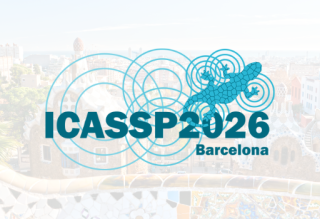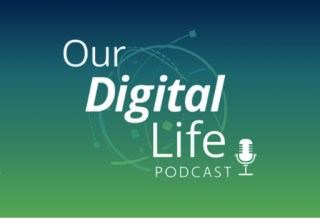- Our Story
- Publications & Resources
- Publications & Resources
- Publications
- IEEE Signal Processing Magazine
- IEEE Journal of Selected Topics in Signal Processing
- IEEE Signal Processing Letters
- IEEE Transactions on Computational Imaging
- IEEE Transactions on Image Processing
- IEEE Transactions on Information Forensics and Security
- IEEE Transactions on Multimedia
- IEEE Transactions on Signal and Information Processing over Networks
- IEEE Transactions on Signal Processing
- IEEE TCI
- IEEE TSIPN
- Data & Challenges
- Submit Manuscript
- Guidelines
- Information for Authors
- Special Issue Deadlines
- Overview Articles
- Top Accessed Articles
- SPS Newsletter
- SigPort
- SPS Resource Center
- Publications FAQ
- Blog
- News
- Dataset Papers
- Conferences & Events
- Community & Involvement
- Professional Development
- For Volunteers
- Information for Authors-OJSP
-
Home
Conferences Events IEEE Signal Processing Magazine IEEE SPL Article IEEE TIFS Article IEEE TMM Article IEEE TSP Article Jobs in Signal Processing Lectures Machine Learning Seasonal Schools Signal Processing News SPM Article SPS Distinguished Lectures SPS Newsletter Article SPS Webinar SPS Webinars SPS Webinar Series Webinar webinars
-
Our Story
What is Signal Processing?

The technology we use, and even rely on, in our everyday lives –computers, radios, video, cell phones – is enabled by signal processing. Learn More » -
Publications & Resources
-
SPS Resources
- Signal Processing Magazine The premier publication of the society.
- SPS Newsletter Monthly updates in Signal Processing
- SPS Resource Center Online library of tutorials, lectures, and presentations.
- SigPort Online repository for reports, papers, and more.
- SPS Feed The latest news, events, and more from the world of Signal Processing.
-
SPS Resources
-
Conferences & Events
-
Community & Involvement
-
Membership
- Join SPS The IEEE Signal Processing Magazine, Conference, Discounts, Awards, Collaborations, and more!
- Chapter Locator Find your local chapter and connect with fellow industry professionals, academics and students
- Women in Signal Processing Networking and engagement opportunities for women across signal processing disciplines
- Students Scholarships, conference discounts, travel grants, SP Cup, VIP Cup, 5-MICC
- Young Professionals Career development opportunities, networking
- Get Involved
-
Technical Committees
- Applied Signal Processing Systems
- Audio and Acoustic Signal Processing
- Bio Imaging and Signal Processing
- Computational Imaging
- Image Video and Multidimensional Signal Processing
- Information Forensics and Security
- Machine Learning for Signal Processing
- Multimedia Signal Processing
- Sensor Array and Multichannel
- Signal Processing for Communication and Networking
- Signal Processing Theory and Methods
- Speech and Language Processing
- Technical Working Groups
- More TC Resources
-
Membership
-
Professional Development
-
Professional Development
- Signal Processing Mentorship Academy (SigMA) Program
- Micro Mentoring Experience Program (MiME)
- Distinguished Lecturer Program
- Distinguished Lecturers
- Distinguished Lecturer Nominations
- Past Lecturers
- Distinguished Industry Speaker Program
- Distinguished Industry Speakers
- Distinguished Industry Speaker Nominations
- Industry Resources
- IEEE Training Materials
- Jobs in Signal Processing: IEEE Job Site
-
Career Resources
- SPS Education Program Educational content in signal processing and related fields.
- Distinguished Lecturer Program Chapters have access to educators and authors in the fields of Signal Processing
- Job Opportunities Signal Processing and Technical Committee specific job opportunities
- Job Submission Form Employers may submit opportunities in the area of Signal Processing.
-
Professional Development
-
For Volunteers
-
For Board & Committee Members
- Board Agenda/Minutes* Agendas, minutes and supporting documentation for Board and Committee Members
- SPS Directory* Directory of volunteers, society and division directory for Board and Committee Members.
- Membership Development Reports* Insight into the Society’s month-over-month and year-over-year growths and declines for Board and Committee Members
-
For Board & Committee Members
Popular Pages
Today's:
- Information for Authors
- (ICME 2026) 2026 IEEE International Conference on Multimedia and Expo
- Signal Processing 101
- Publications & Resources
- Governance Documents
- Guidelines for Reviewers
- Publications
- Editorial Board
- IEEE Transactions on Multimedia
- Unified EDICS
- (SPAWC 2026) IEEE 27th International Workshop on Signal Processing and Artificial Intelligence for Wireless Communications
- SPS BSI Webinar: Integration of Brain Imaging and Genomics with Interpretable Multimodal Collaborative Learning
- (ASRU 2025) 2025 IEEE Automatic Speech Recognition and Understanding Workshop
- SPS Travel Grants
- (SiPS 2025) 2025 IEEE International Workshop on Signal Processing Systems
All time:
- Information for Authors
- Submit a Manuscript
- IEEE Transactions on Image Processing
- IEEE Transactions on Information Forensics and Security
- IEEE Transactions on Multimedia
- IEEE Transactions on Audio, Speech and Language Processing
- IEEE Signal Processing Letters
- IEEE Transactions on Signal Processing
- Conferences & Events
- IEEE Journal of Selected Topics in Signal Processing
- Information for Authors-SPL
- Conference Call for Papers
- Signal Processing 101
- IEEE Signal Processing Magazine
- Guidelines
Last viewed:
- Video of the month: Cordless One-Legged Hopping Robot by Disney
- Editorial Board
- 2011 Class of SPS Distinguished Lecturers Announced
- Information for Authors
- (ASRU 2025) 2025 IEEE Automatic Speech Recognition and Understanding Workshop
- Conflict of Interest
- The Next Phase of Wearable Tech: Tattoos By Robby Berman
- Meet the 2020 Candidates: IEEE President-Elect and Division IX Director-Elect
- (CAI 2026) IEEE Conference on Artificial Intelligence 2026
- Guidelines for Reviewers
- (ICIP 2026) 2026 IEEE International Conference on Image Processing
- (ICME 2026) 2026 IEEE International Conference on Multimedia and Expo
- Call for proposals: 2027 IEEE Conference on Artificial Intelligence (CAI)
- Explainability in Graph Data Science: Interpretability, replicability, and reproducibility of community detection
- IEEE SPM Special Issue on Accelerating Brain Discovery Through Data Science and Neurotechnology
Federated Learning: A signal processing perspective
You are here
Publications & Resources
Signal Processing Magazine
For Authors
Top Reasons to Join SPS Today!
1. IEEE Signal Processing Magazine
2. Signal Processing Digital Library*
3. Inside Signal Processing Newsletter
4. SPS Resource Center
5. Career advancement & recognition
6. Discounts on conferences and publications
7. Professional networking
8. Communities for students, young professionals, and women
9. Volunteer opportunities
10. Coming soon! PDH/CEU credits
Click here to learn more.
Federated Learning: A signal processing perspective
The dramatic success of deep learning is largely due to the availability of data. Data samples are often acquired on edge devices, such as smartphones, vehicles, and sensors, and in some cases cannot be shared due to privacy considerations. Federated learning is an emerging machine learning paradigm for training models across multiple edge devices holding local data sets, without explicitly exchanging the data. Learning in a federated manner differs from conventional centralized machine learning and poses several core unique challenges and requirements, which are closely related to classical problems studied in the areas of signal processing and communications. Consequently, dedicated schemes derived from these areas are expected to play an important role in the success of federated learning and the transition of deep learning from the domain of centralized servers to mobile edge devices.
In this article, we provide a unified systematic framework for federated learning in a manner that encapsulates and highlights the main challenges that are natural to address using signal processing tools. We present a formulation for the federated learning paradigm from a signal processing perspective and survey a set of candidate approaches for tackling the concept’s unique challenges. We further provide guidelines for the design and adaptation of signal processing and communication methods to facilitate federated learning at a large scale.
Machine learning has led to breakthroughs in various fields, such as natural language processing, computer vision, and speech recognition. Since machine learning methods, and particularly those based on deep neural networks (DNNs), are data driven, their success hinges on vast amounts of training data. These data are commonly generated at edge devices, including mobile phones, sensors, vehicles, and medical devices. In the traditional cloud-centric approach, data collected by mobile devices are uploaded and processed centrally at a cloud-based server or data center. Because data sets, such as images and text messages, often contain private information, uploading them may be undesirable due to privacy and locality concerns. Furthermore, sharing massive data sets can result in a substantial burden on the communication links between the edge devices and the server.
SPS Social Media
- IEEE SPS Facebook Page https://www.facebook.com/ieeeSPS
- IEEE SPS X Page https://x.com/IEEEsps
- IEEE SPS Instagram Page https://www.instagram.com/ieeesps/?hl=en
- IEEE SPS LinkedIn Page https://www.linkedin.com/company/ieeesps/
- IEEE SPS YouTube Channel https://www.youtube.com/ieeeSPS
Home | Sitemap | Contact | Accessibility | Nondiscrimination Policy | IEEE Ethics Reporting | IEEE Privacy Policy | Terms | Feedback
© Copyright 2025 IEEE - All rights reserved. Use of this website signifies your agreement to the IEEE Terms and Conditions.
A public charity, IEEE is the world's largest technical professional organization dedicated to advancing technology for the benefit of humanity.











